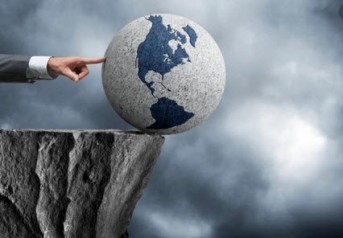 Understanding any ecosystem, you have to attempt to understand the whole system. The energy system is no different to begin to relate and build innovative solutions that bring this complexity into a new order.
Understanding any ecosystem, you have to attempt to understand the whole system. The energy system is no different to begin to relate and build innovative solutions that bring this complexity into a new order.
To help with this energy ecosystem thinking the International Energy Agency (IEA) are doing some pioneering work that I want to touch upon briefly, so there is a broader awareness of this.
Exploring the IEA report yet again, “Energy Technology perspective: Special Report on Clean Energy Innovation,” released mid last year, actually on 2nd July 2020, has so much depth of value to relate to in the energy transition challenges being faced.
In this report, they have developed some improved modelling tools to bring a higher capacity to answer key technology questions in greater detail that make up the Energy Ecosystem.
This new modelling is good news and highly valuable.
IEA further followed that up later in 2020 with a flagship ETP 2020 publication to keep a tighter and more consistent focus on the role and need for innovation to accelerate clean energy transitions.
The ability to map the entire Energy System is critical
The work undertaken by the IEA has produced a comprehensive perspective of where we are today, and our needs to track the achievements of different innovation breakthroughs known and in development or validation, to bring about the required clean technology energy solutions that need to be innovative in design for a new Energy System.
Their ETP Clean Energy Technology Guide is an interactive framework that contains information for over 400 individual technology designs and components across the whole energy system that contribute to achieving the goal of net-zero emissions. Currently, this stands at 433.
For each of these technologies, it includes information on the level of maturity (or Technology Readiness Level, TRL) and a compilation of development and deployment plans and cost and performance improvement targets and leading players in the field.
You can use the different filters offered to narrow down the selection of technologies you are interested in to achieve your designated search. Also, they provide an amazing poster version that covers all the energy ecosystem aspects. Here is a download link to this poster.
The Critical Parts of the Clean Energy Ecosystem
Briefly, the IEA approach breaks down the Energy Ecosystem by the classic Supply-side, the Co2 infrastructure aspects needed for clean energy, and the Demand Sectors by the crucial parts of transport, industry, and buildings.
The Supply Side requirement from Clean Energy Technologies
The guide goes into all aspects of the technologies in the energy transformation on power generation, heat, tackling biofuels, hydrogen, ammonia, synthetic hydrocarbon fuels, and refining. The technology grouping is then further broken down into generation, storage, infrastructure, and specific production and transport where necessary.
The Co2 infrastructure required for Clean Energy
This looks at the importance of Carbon Capture, Storage and Utilization (CCSU) with a breakdown of Supply sided CCU’s, Direct Air Capture (DAC) and Demand CCU’s tackling high-value chemicals, methanol, ammonia, iron and steel, cement and aluminium by fuels and methods.
The Demand Sectors needs from Clean Energy Innovation Technologies.
Within the breakdown, you have a structured approach to the technology grouping, the technologies applied, the sub-technology where necessary, and the specific components or design needed. This demand-side breaks the three significant energy consumers down into transport, industry, and buildings.
Transport covers the road, rail, shipping, aviation, and freight, showing sub-components or design by vehicle mode, their needed infrastructure, operations, and necessary components of different design solutions.
The industry segment covers critical a comprehensive breakdown of dealing with different “harder-to-abate areas covering ammonia, methanol, ethylene, benzene, toluene, and xylenes. It covers the specific industry sectors of high-value chemicals, plastics, iron and steel, cement, pulp and paper, aluminium, metallic products, and finally, cross-cutting one that requires systems integration. The technology applied covers fossil fuel, biomass-based, electrolytic H2 based, further broken down into recycling, blast furnacing, smelting, kilns, grinding, curing, pulping, and waste production conversion.
The buildings segment is broken down first into construction, renovation, heating and cooling options and designs, with further sections dealing with cooking, lighting, and system integration. Here it is looked at by generation, performance, efficiency, co-generation, distribution, control system, and storage.
Capture the Ecosystem of Energy Innovations and Technologies is a fantastic piece of work.
This work is a stunning breaking down of the entire Energy System, which was updated this year by the International Energy Agency and presented in such a visual way in the poster design work by Lundgren+Lindqvist the understanding of the complexity but also the innovation technology opportunities available.
The other more amazing part is the interactive website for using and tracking the evolution of The Clean Energy in Innovations and Technology as an ongoing Guide for presently 433 identified individual technology designs and components across the whole energy system for knowing where we are in their contribution to achieving the goal of net-zero emissions is impressive.
Yout time will be well-invested in viewing this work by the IEA if you want to grasp the entirety of the Energy System as a whole and what makes up this Ecosystem.
I have to recommend anyone interested in the Energy System take a look at the website or download the poster to appreciate the complexity of the design and change we are all caught up in and need support.
Our energy systems and tracking their progress today and in the future allows us all to participate and build more pressure on those undertaking the need for a radical redesign. It is of a scale that this work can better understand that the IEA is undertaking, showing the innovations for technologies that can deliver the clean energy ecosystem we need to have in place.
Do take the time to visit the website https://www.iea.org/articles/etp-clean-energy-technology-guide